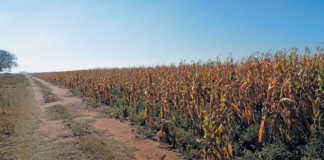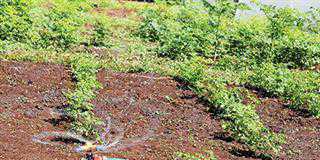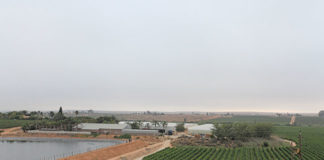The wine surplus across the globe is putting the livelihoods of wine farmers under pressure. While there are no easy answers, key role-players in the South African wine industry feel wine tourism has an important part to play in the survival and growth of the industry, and are urging local producers to embrace all they have to offer. Sonja Burger reports.
In 2006 approximately one billion bottles of French and Italian wines were turned into disinfectant and fuel. So serious is the wine glut in Europe that the EU has tabled radical proposals to restructure the wine industry – proposals that include ripping out vineyards.
Crisis distillation has become endemic in Europe as New World wines increasingly make inroads into traditional EU wine markets. By the same token, however, the expansive New World wineries are equally troubled by world wine surpluses. In Australia 40% of wineries are reported to be making losses and in some cases wine is being sold at below the price of bottled water.
The grapes that Fosters, an Australian-based global player in the beverage market, left on the vine in 2006 was more than New Zealand’s total production. After a decade of export expansion in the South African wine industry, indications are that the thumbscrews of international competition are twisting into soft flesh.
In South Africa, too, some grapes will be left to rot on the vines in 2007 in spite of what promises to be one of the best quality harvests in many years. Speakers at the annual Vinpro information day in January discussed various strategies to counter the prevailing negative trading conditions in the wine industry.
These include cooperation between wineries to improve economies of scale and the creation of large, powerful wine companies, greater investment in marketing, more cost-effective vineyard practices, investment in research and development, and more efficient administration systems.
The one thread that seemed to run through most of the speeches, however, was that South African producers should harness the power of a healthy tourist industry to draw consumers directly to the cellar door.
More overseas and local consumers at the cellar door could also result in more direct sales. The tourists, who are exposed to positive wineland experiences, become a marketing force in their own right when they return to their provinces or countries and relay their experiences.
Many of them continue to order wine from their favourite destinations or buy those products on their local shelves, if available. While increased wine tourism is not a panacea for the wine industry, it is a strategy that should not be underestimated.
Professor Kader Asmal, chairman of the Wine Industry Council, says wine tourism should be a strategic priority for the wine industry. Tim Rands, MD of Vinimark, says the world is increasingly moving towards an “experience economy” where people are swayed more by experiences than needs.
Consumers want experiences rather than commodities. They want to “do” even more than they want to “own”. They want memories as opposed to things. The overwhelming range of choices available to them means consumers are looking for goods and services that offer a multi-sensory experience, which sets those goods and services apart from the competition and enriches the consumer experience.
According to Stats SA, 1,4 million tourists arrived at Cape Town International Airport in the nine months between January and September 2006. Of these, 90% were on holiday.
“Wine tourism currently generates about R4 billion per annum. It should be twice that amount,” says Tim Rands. He adds that growth had to be driven through experiential wine tourism – at cellar doors, hotels and restaurants – but says the gourmet and hotel experience in the winelands was short-sold.
“Stellenbosch Wine Route figures show that 24% of visitors are from Gauteng and 28% are international visitors. Those from outside the Western Cape mostly stay in Cape Town and visit the regions on daily excursions. Why aren’t they staying in the Winelands?” he asks.
Rands challenges local producers, ”In Worcester, have you associated your wine with a local 5-star restaurant? Have you created markets for organic fruit and vegetables combined with your wine? The people of Cape Town are waiting for you to do just that.”
Flagstone MD and winemaker Bruce Jack, a consummate wine marketer, says South African producers have a plethora of unique selling propositions that they could use to promote South African wine at the cellar door and elsewhere. “Take IPW [Integrated Production of Wine, an environmentally friendly wine-making code that 90% of the wine industry in South Africa voluntarily supports].
Nobody else in the world has that as a selling point. It will take the Australians a decade to get to where we are in terms of integrated production of wine.” Jack says UK consumers are obsessed with eco-friendliness, yet South African producers are slow to embrace this. According to Jack, ethical business is another prime concern in Europe. South African producers should confidently tell the world about the developments that have taken place over the past 15 years in terms of BEE and ethical trade. One of the best places to do this effectively is on-farm – in the intimacy of a one-on-one conversation with the consumer.
Jack says South Africa has the oldest soils in the world, which enable producers to create more complex wines in a 3ha block of vineyard than the Aussies can create when they blend from 15 different regions. “We need to tell people this and make them taste it,” Jack urges. “We don’t believe in ourselves because we have a Eurocentric view of quality. When visitors come to your door praising French wines, for example, pull out a South African wine and a French wine and let them taste the difference. Tell them we are good. Let them see and taste for themselves how good, in fact.” |FW
Success stories
Spier
The Spier wine estate outside Stellenbosch is now one of the top 10 tourist destinations in South Africa. In addition to sampling the estate wines, tourists are offered the opportunity to dine at five different restaurants, enjoy body massages, attend shows in an open-air summer theatre, watch the rehabilitation of birds of prey and stroke cheetahs in a cheetah sanctuary. The eclectic mix of experiences on offer might be a departure from the traditional wineland fare, but succeeds in attracting some 250 000 visitors per year.
Fairview
With unbridled enthusiasm, astute business acumen, an ability to think out of the box, and a shrewd understanding of the power of the media, Charles Back has turned his historic 300ha family farm on the southwestern slopes of Paarl Mountain into a prime wineland tourist destination. Bus-loads of tourists pour through the gates of the farm every day. Back has managed to interweave goat lore with local wine tradition to create a facility that allows people to eat and drink to their heart’s content in a relaxed atmosphere. Those who frequently visit the estate have seen the careful, but determined strides made over the past two years – the old maturation cellar has been converted into a casual, wildly popular Mediterranean-styled indoor/outdoor eatery, called the Goatshed, and the cheese-and-wine tasting room has recently been renovated.
Six ingredients of a special wineland experience
- Great wines that are produced by a passionate winemaker(s).
- A beautiful, natural setting – views, mountains, gardens, rivers, dams.
- Good food – distinctive, fresh, local.
- Cultural distinction – something that tells visitors this is not home, experiences that make them feel that they are participating in something unique to the setting and environment. Cultural distinction can be rooted in the family who owns the farm – for example, the Retiefs of Van Loveren serve their vetkoek under trees planted by the family’s matriarch.
- Information – many South African hospitality establishments underestimate the importance of sharing information with their visitors. Information about the geography, the history, the people and the practices on a farm is what creates a special sense of place for the visitor. The majority of wine tourists are educated people (76% have a tertiary qualification), whose experiences are often cognitively enhanced when they can take home new facts and insights.
- Service – exposing clients to tasting room staff whose luke-warm response is “I don’t know, but I can find out… if you want,” is a sure-fire way to drive them away. By the time your staff deal with the public, they should know all the answers.













